Dee Clements: In Conversation with Dee Clements
July 23rd - August 31st, 2024We had the pleasure of sitting down with artist Dee Clements to explore how her art, deeply rooted in ancient basketry traditions, reflects her personal journey. Our conversation reveals the raw vulnerability in her work, her innovative fusion of textiles and ceramics, and the relentless passion fueling her creative process.
-
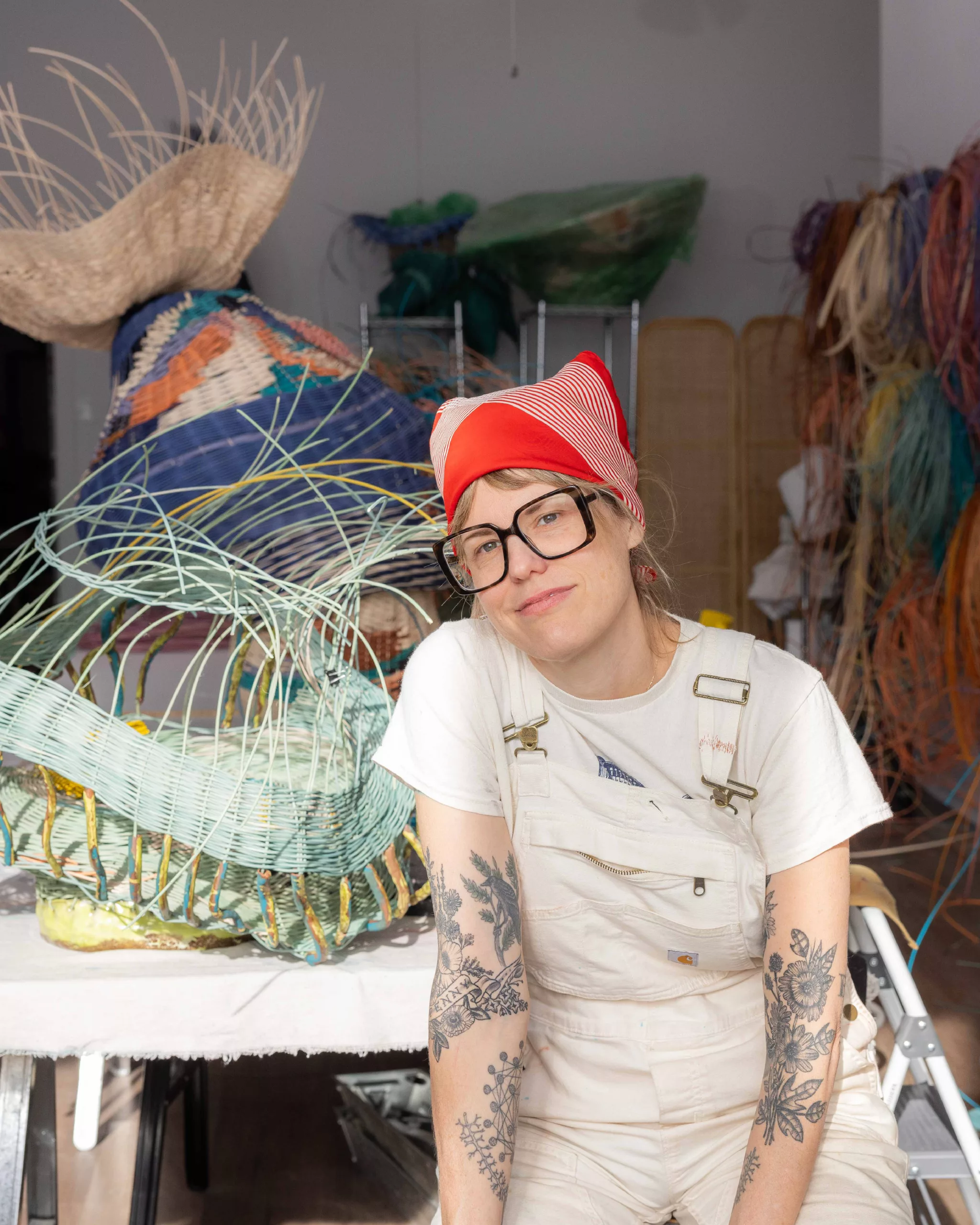
Dee Clements in her studio in Chicago, Illinois. Photography by Clare Britt.
-
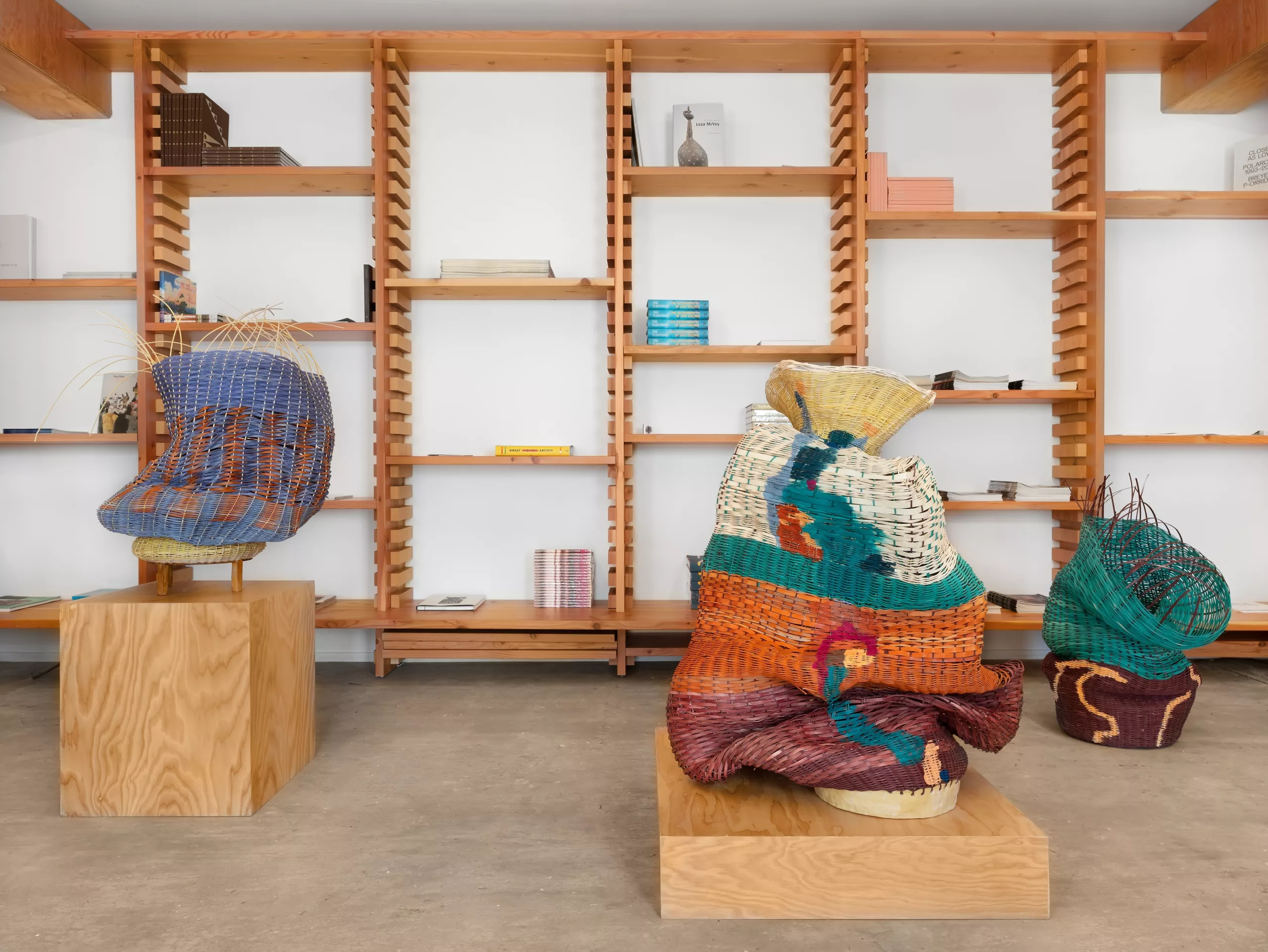
Dee Clements: The Future has an Ancient Heart. Installation View
How diaristic is your work?
My work is steeped in ancient history. I always say I look backward to move forward. Basketry is 34,000 years old; it evolved alongside human beings. There’s a point in time where craft became gendered: the Bronze Age marked the beginning of agriculture and a new kind of domination. Weaving started to become women’s work because women could do it at home while men worked in the fields.
I ran a textile company for almost 12 years, and my undergrad was in sculpture and fiber. I went to grad school to move away from weaving, but when I got there, I started deeply researching the history of weaving, not even meaning to. I was intrigued by the division between male and female roles thousands of years ago and how it set a trajectory for human culture moving forward.
-

Detail of Dee Clement's Woman Seated, 2023, Reed, dye, gouache paint, spray paint, ceramic, polyurethane, 35 x 29 dia in.
And then what happened?
Well, I was really just thinking about utility at the time because of the furniture program I was in, but when I went to Cranbrook, I sort of gave myself permission to go back towards making art again, which was uncomfortable as someone who had been working in design and products. I was just turning 40, and these body things started happening that were very related to being female and having female parts. Those experiences started to get connected to the work. At the time I felt so unseen and all of that stuff began to play out in the pieces, so the work became very corporeal. Now, I’m facing a hysterectomy this summer, so I’ve been making work that’s very uterine, flappy, and flowy.
-
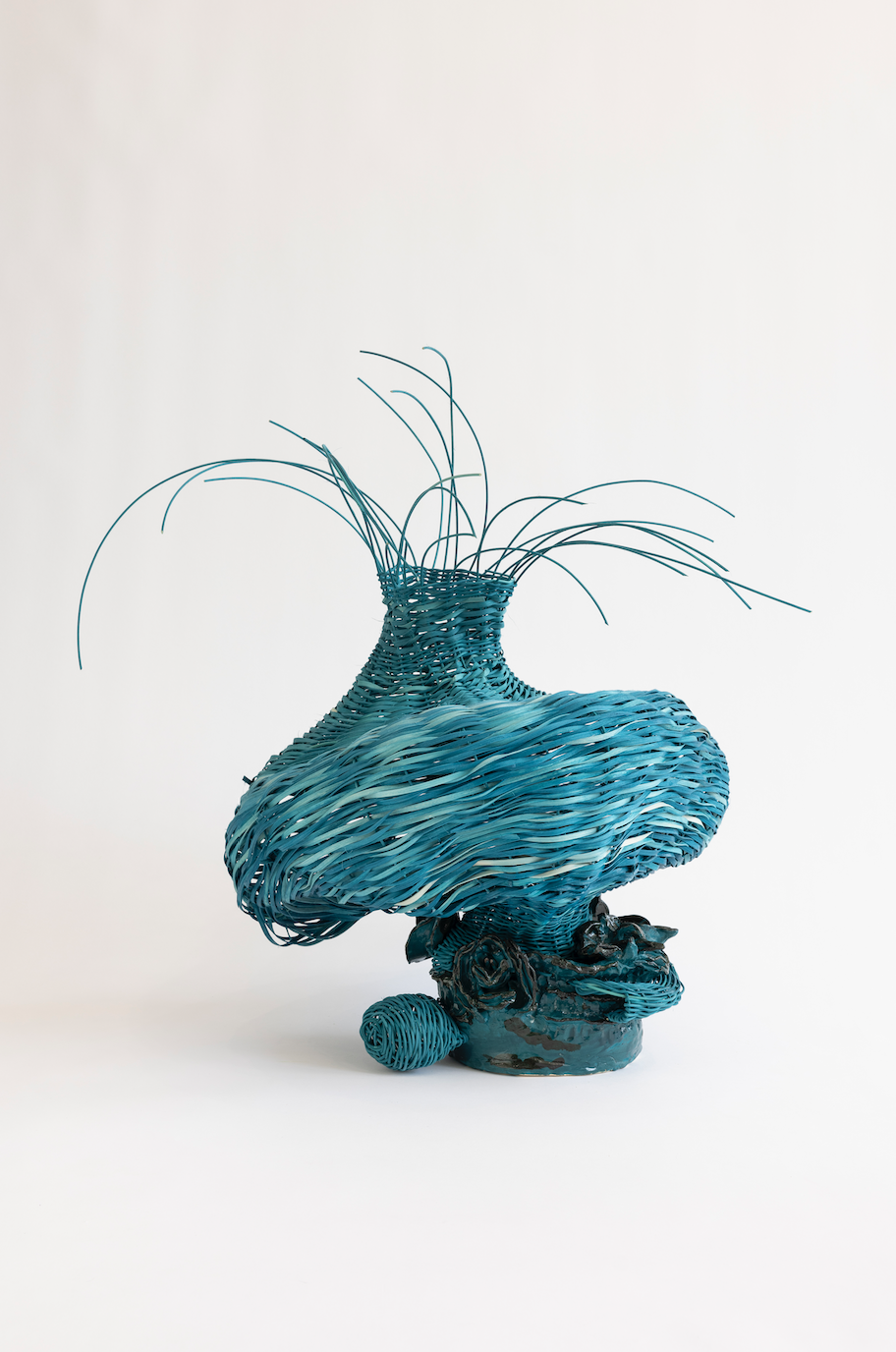
Dee Clements, Grotesque Flowers; A Woman is a building, 2024, Ceramic, reed, dye, polyurethane, 32 x 25 x 25 in. Photography by Clare Britt.
-
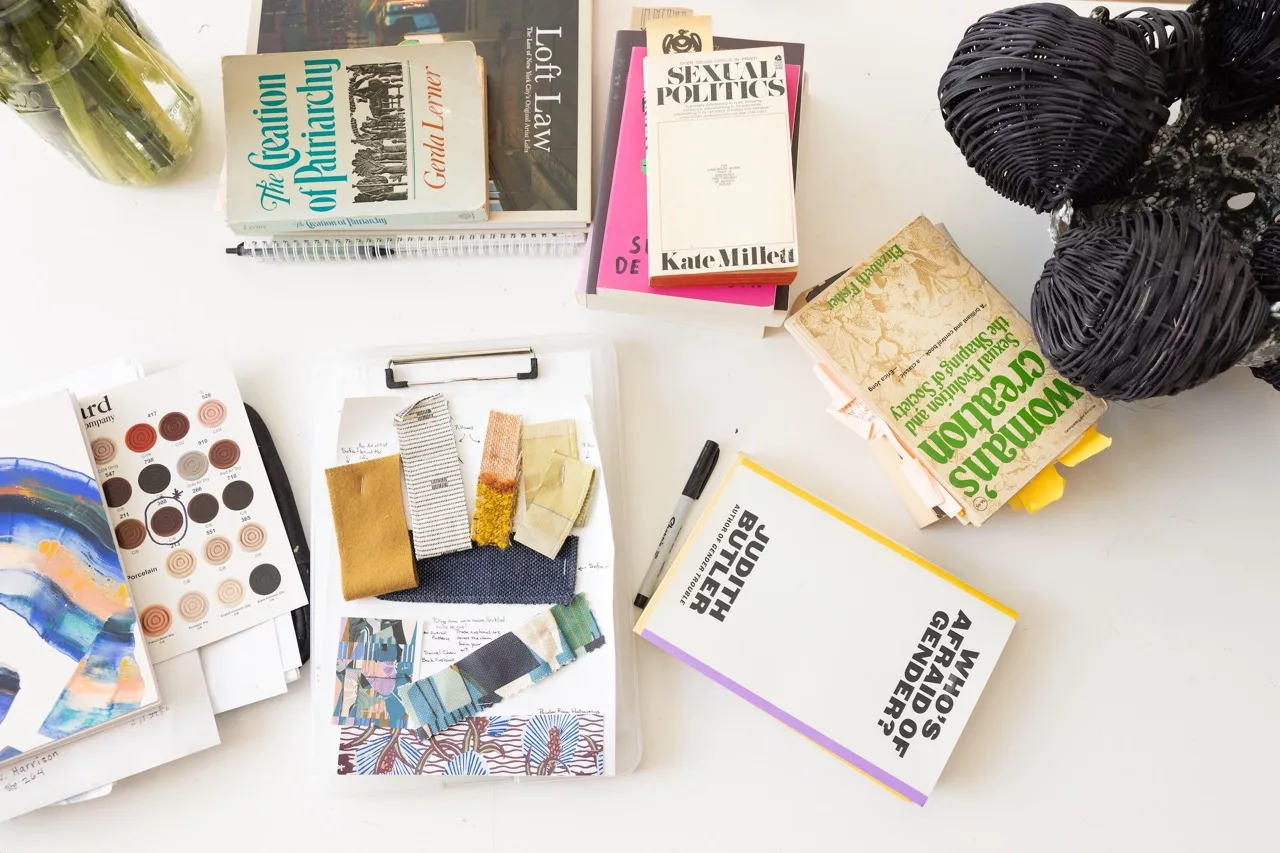
Dee's desk. Photography by Clare Britt.
I thought it was interesting that the new works are called Grotesque Flowers. There is something about body horror in there. Baskets usually keep things contained and yours pour out their guts.
Yes, absolutely. When you think of a basket, you think of utility. You think of Easter or bread baskets or Jane Birkin. I want to flip all that around. There’s this theory of human evolution that the animal stomach was the first vessel, and then the basket was the next vessel. I like pulling the basket away from that history of containers and showing what’s inward outward.
With this particular series, I was in the midst of all these ultrasounds and tests and I was thinking about just how gross the whole process has been. We talk about the womb as if it’s a flower—I’m thinking about Judy Chicago and Georgia O’Keeffe. Nobody wants to talk about the abject, and we should be. I want to present it in a way that’s palatable but also not palatable. I want to make work about what’s happening to women and our bodies. It’s been a precarious time—the overturning of Roe v. Wade. Who knows who is going to become president and what that’s going to do for human rights. These are all things that I’m thinking about, and it’s coming out in the work. I want to talk about gender. I want to talk about sex. I want to talk about bodies. Because at the end of the day, we’re all human beings and experiencing the world through this meat sack.
-
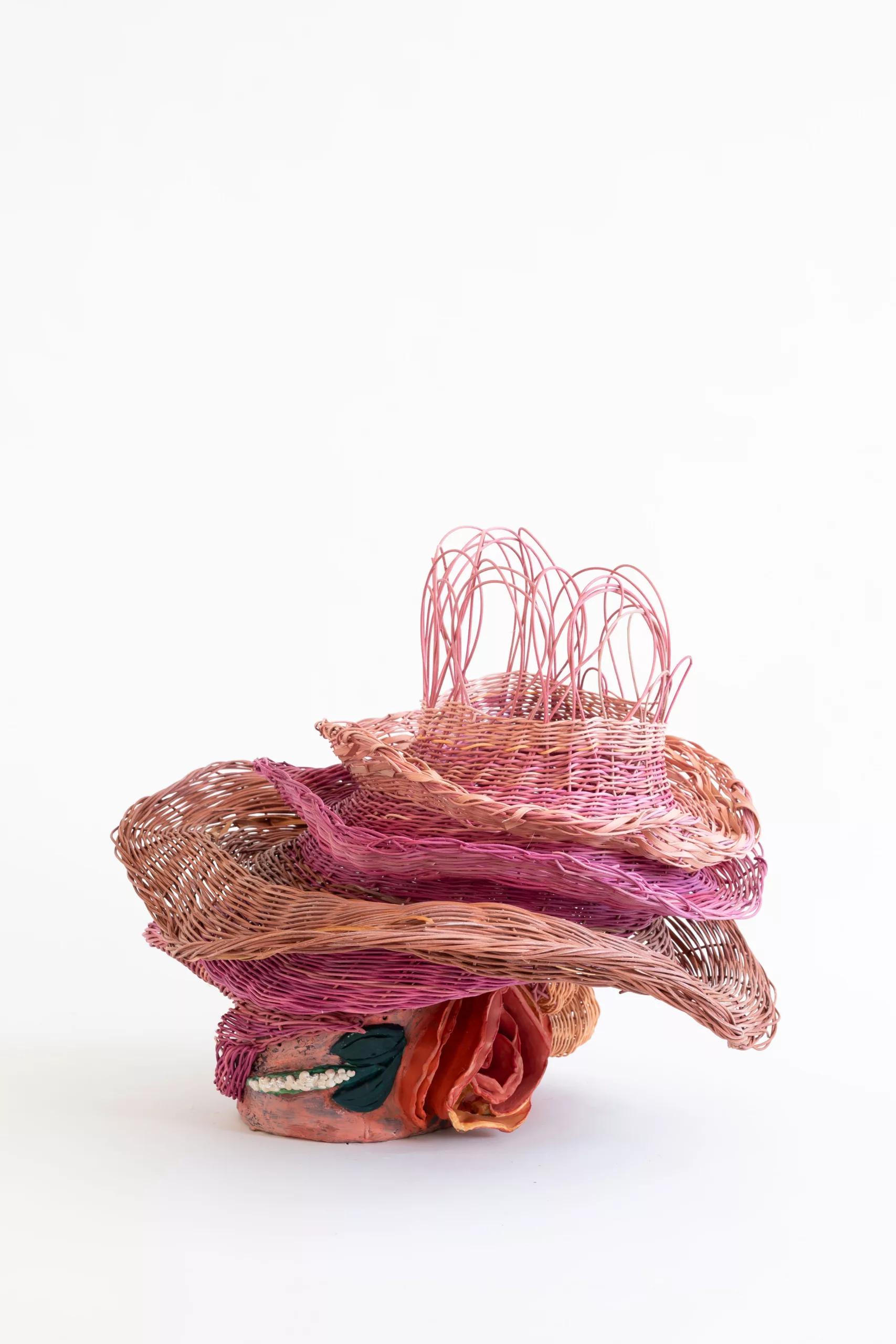
Dee Clements, Grotesque Flowers; Masculine/feminine, 2024, Dyed reed, ceramic, polyurethane, 25 x 30 in. Photography by Clare Britt.
Does it feel vulnerable to put out work about your intimate self?
Yes. It’s really vulnerable to make art, create music, or write books because you’re putting your inner thoughts out for people to look at, scrutinize, or form opinions about. I think all artists and creative people are really brave. I also feel that the only way to make others comfortable enough to engage with uncomfortable subjects is to share a part of myself. Doing so has created opportunities for me to connect with others and not feel so alone in these experiences. This is why I make art and why we’ve been doing it for thousands of years.
-
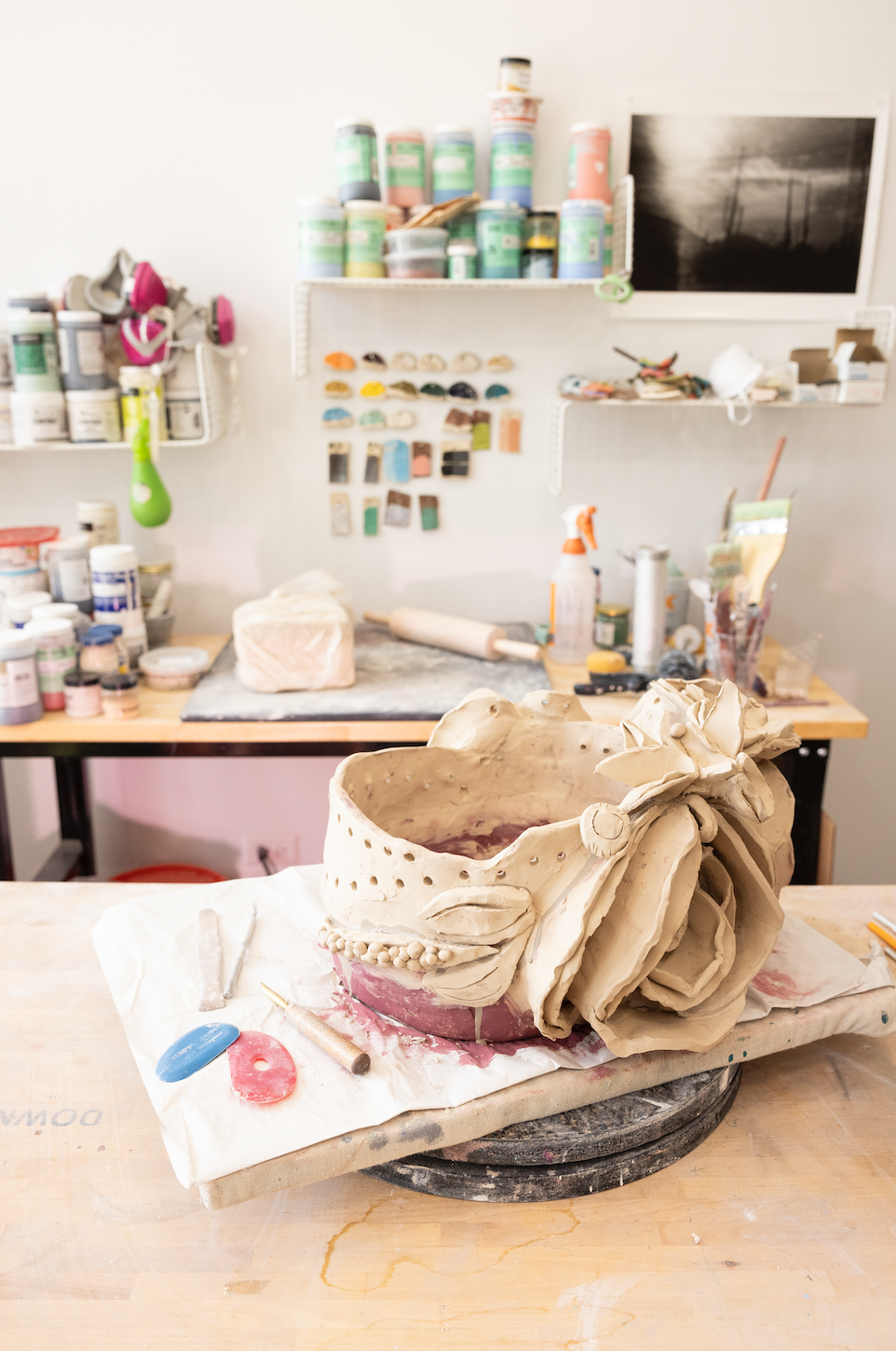
In progress shot of Dee Clement's "Grotesque Flowers; Masculine/feminine" (2024). Photography by Clare Britt.
-
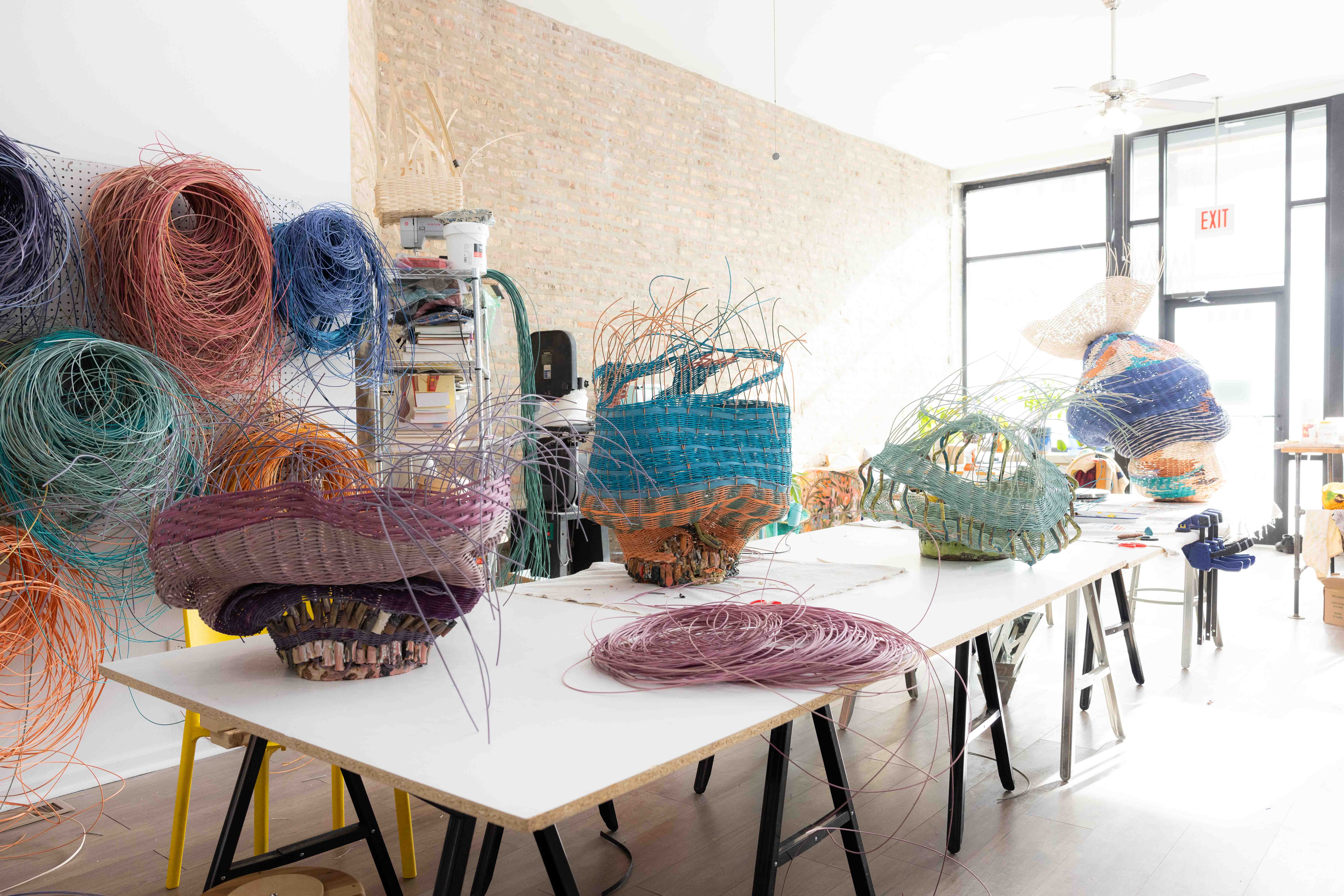
A glimpse into the artist's studio. Photography by Clare Britt.
What about the ceramic elements?
The ceramics serve a couple of functions. They anchor the basket so it doesn’t just collapse, but they also serve a hierarchical function. Normally, ceramics are taken more seriously than weaving and textiles, but in this context, it’s the weaving that’s the focal point. I always want the ceramics to be secondary to the weaving. I want it to be what holds it down so that it can do its weirdo thing.
-
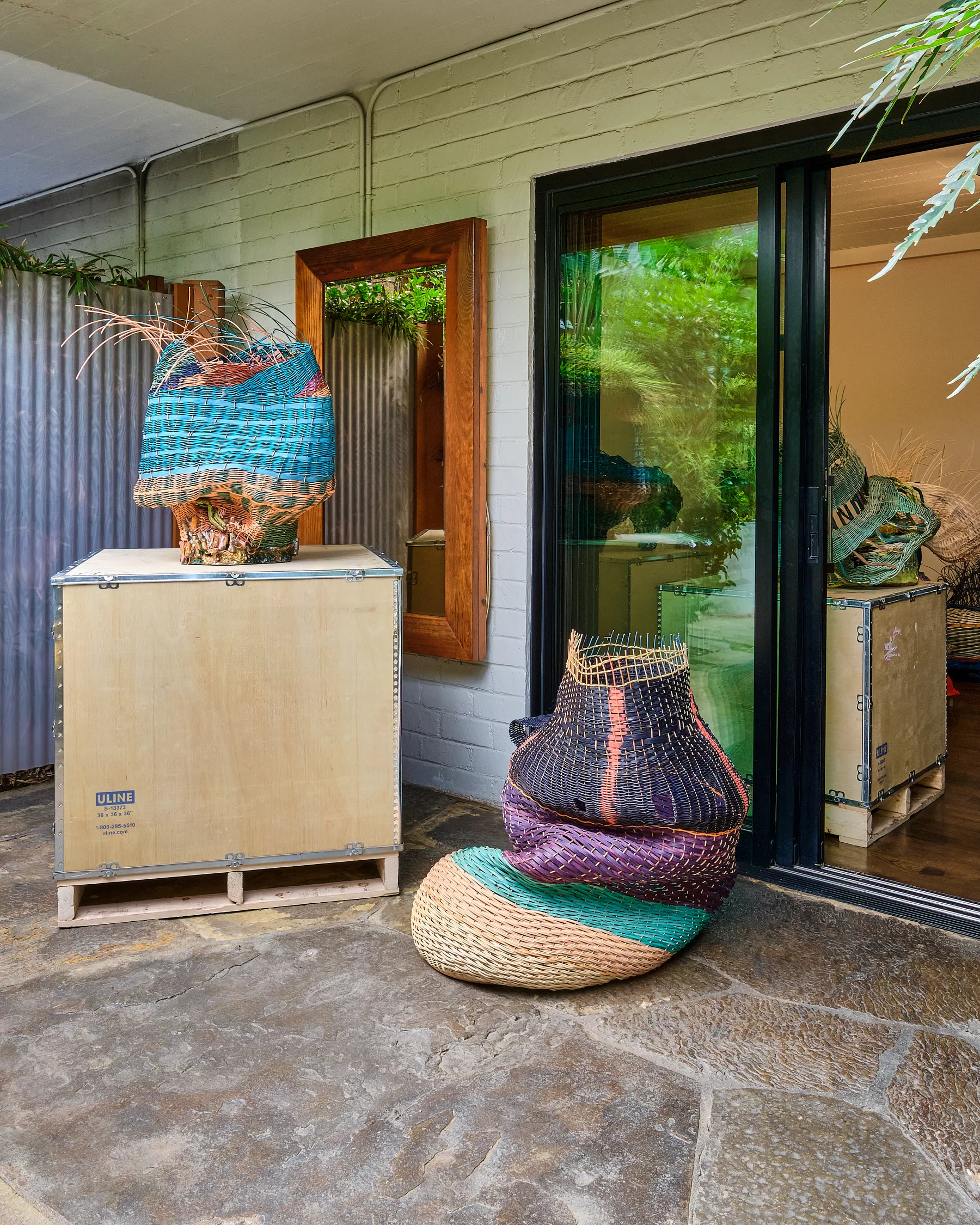
Dee Clements: Felix LA 2024, Installation View.
Do you ever think about other materials?
I’m always looking for ways to challenge myself. I love material mixing and code-switching. It keeps me awake and moving forward, and I want that in my work. Right now, it’s ceramics and weaving. Maybe next there’ll be a metal element. I follow my curiosity.
What about the gouache and the painting?
Painting was originally my primary medium. There has always been a little connection between drawing and painting in all the work I’ve ever made. Now, it’s just bubbling up in a stronger way that other people can see.
-
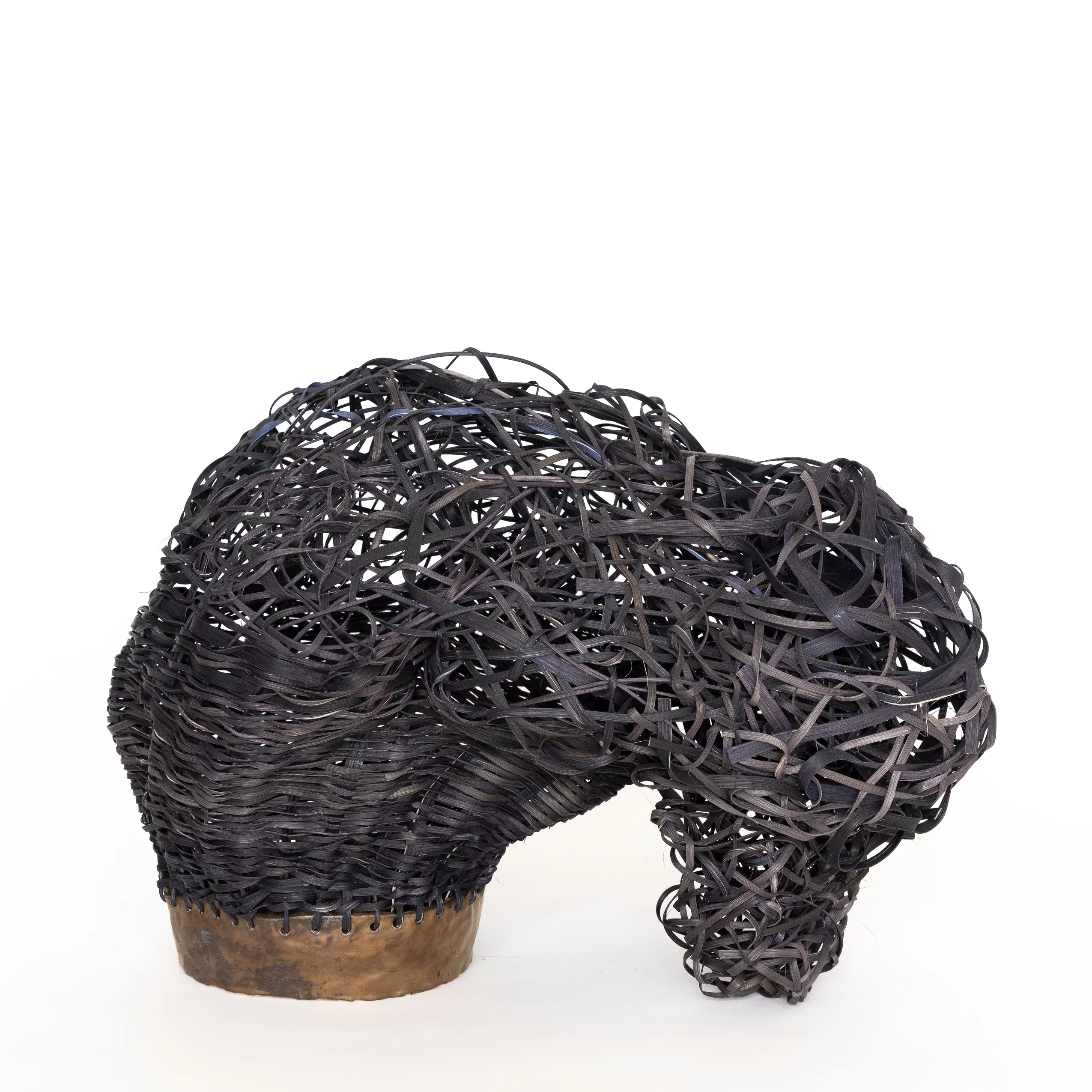
Dee Clements, A Leg To Stand On, 2023-24, Ceramic, dyed reed, 21 x 27 in. Photography by Clare Britt.
-
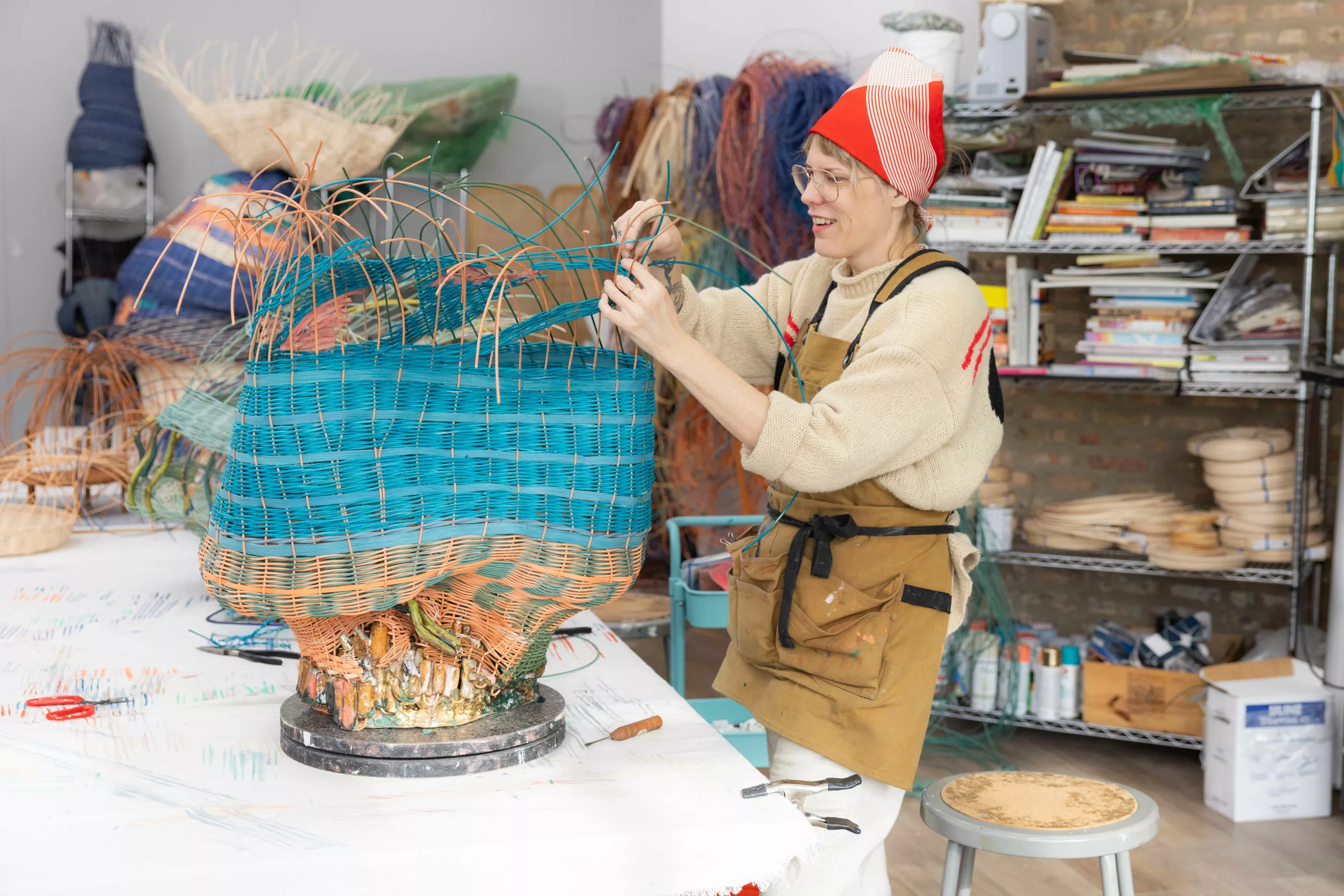
Dee working on "Yes is a Pleasant Country" (2024). Photography by Clare Britt.
What about your relationship to color?
My relationship to color is super nostalgic and instinctual. I’ve studied color theory, but I don’t pay attention to it. I put colors together that feel right to me. I have this personal rule for color that my friend taught me when we were in undergrad. It’s the 90%-10% ratio. The theory is that a composition is either more dynamic when it is 90% full or 10% full. It’s either totally maximal or totally minimal, and that’s how I work.
Do any of the colors or parts of the work draw from your environment, aka Chicago?
Chicago is a working-class city, and I come from a working-class background. All I know how to do is work. I’m terrible at taking time off. People think I’m super successful because of how often I am in the studio, but it’s because I just don’t know how to be chill.
-
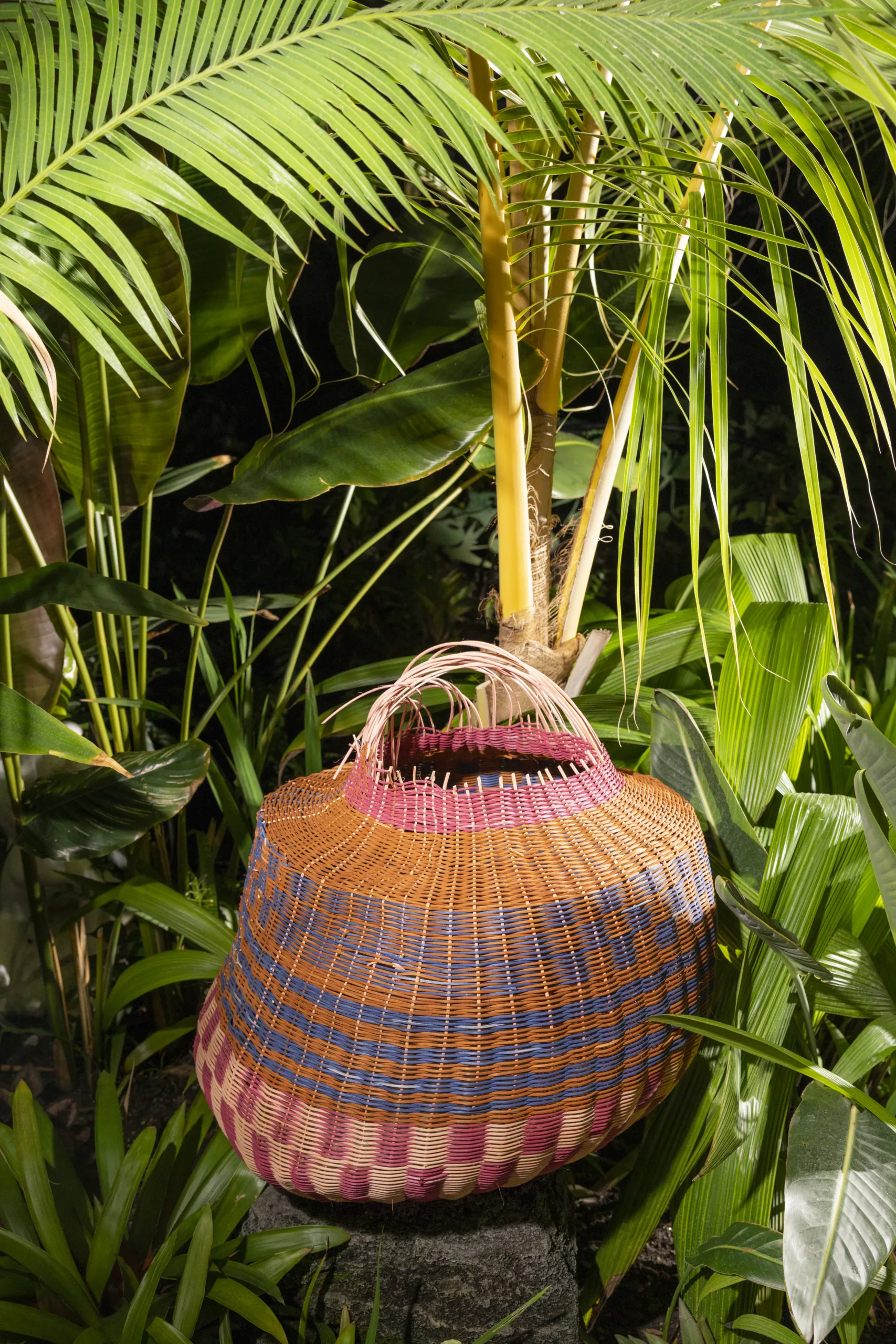
Dee Clement's "Untitled" (2022) in Oak Park Conservatory. Photography by Clare Britt.
Does that apply to individual pieces? Do you rework the same sculpture again and again?
Yes, the material has a memory, and it will dry in the shape you put it in, but you can always dunk it or spray it down and re-manipulate it, which is really forgiving. Sometimes I’ll get something totally finished and not like where it’s going, so I’ll dunk it and move it in a way that feels better. That’s a really fun part about it; you aren’t married to a specific form—you can constantly reshape and evolve it.
-
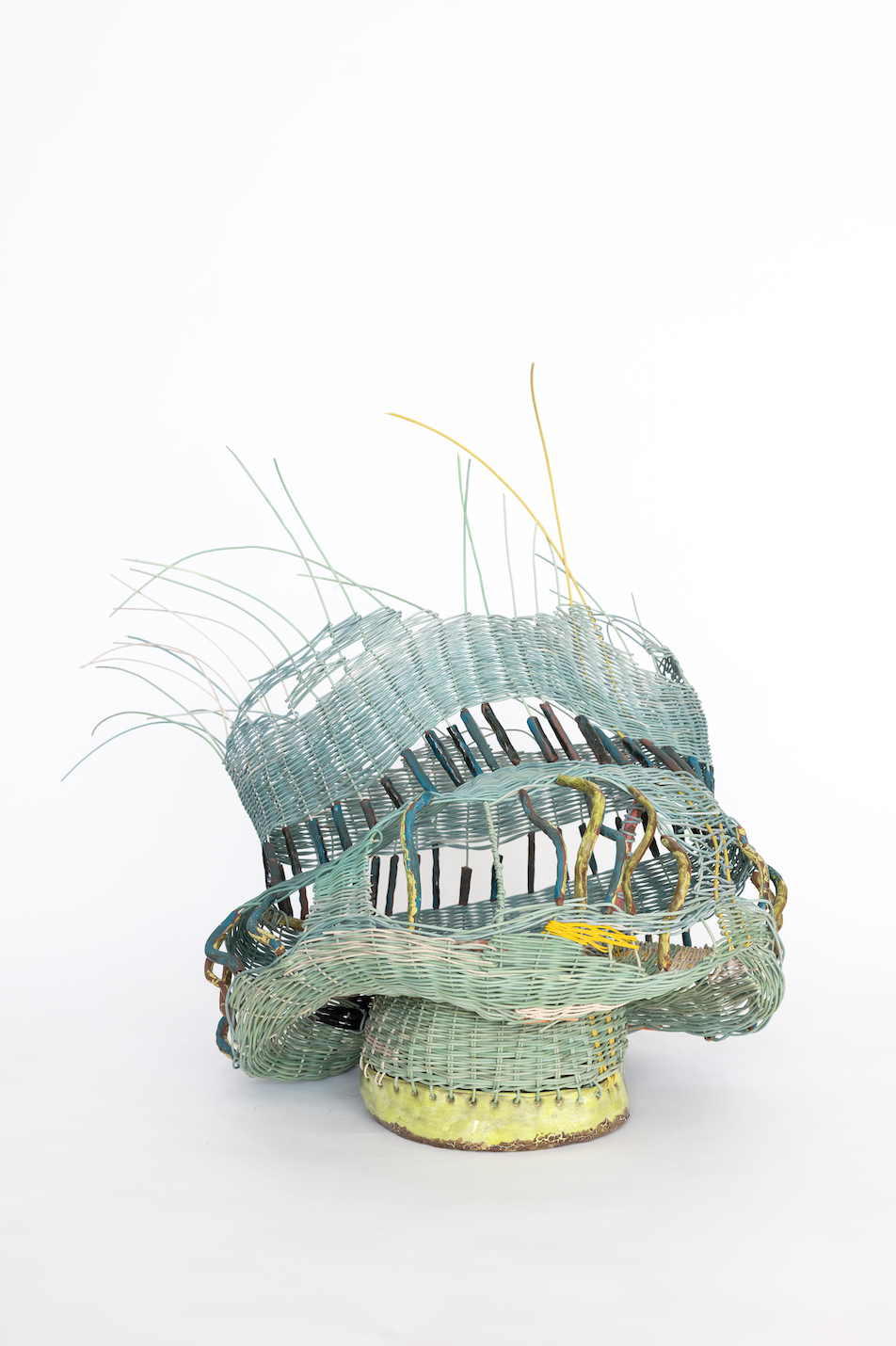
Dee Clements, Pretty on the Inside, 2023-24, Ceramic, dyed and painted reed, 38 x 26 in. Photography by Clare Britt.
Dee Clements (b. 1980) is an artist based in Chicago. She has a deep love of and interest in craft and ethnography. She holds an MFA in 3D Design from Cranbrook Academy of Art and BFA in Fiber/Materials Studies and Sculpture from The School of The Art Institute of Chicago. "Craft reveals rich connections between people, materials, objects and culture. I am endlessly interested in the ethnography of objects, feminism and the origins of patriarchy. These are social lenses that drive my practice. The lineage of weaving is one that every culture in the world has a relationship with. It is undeniably one of the most ubiquitous crafts known worldwide. The first interlacements of fibers date back to 34,000 years ago, used as vessel like-structures to hold foraged food. Weaving is a coded language of ingenuity, tactility, utility. It is a craft that defines the human impetus to innovate and create." "I use basketry to combine all the elements of my 25-year practice; painting, sculpture, ceramics, furniture making and weaving to create three-dimensional forms that reference female bodies and experiences. I work with materials like reed, cane, clay, rope, and wood to create corporeal-like vessels that are bulbous or oblong, droopy, saggy, leaning, bent, have folds, rolls, and lumps. I dye and paint the pieces intuitively and improvisationally in often bold and vibrant color combinations to highlight or exaggerate parts of the forms."